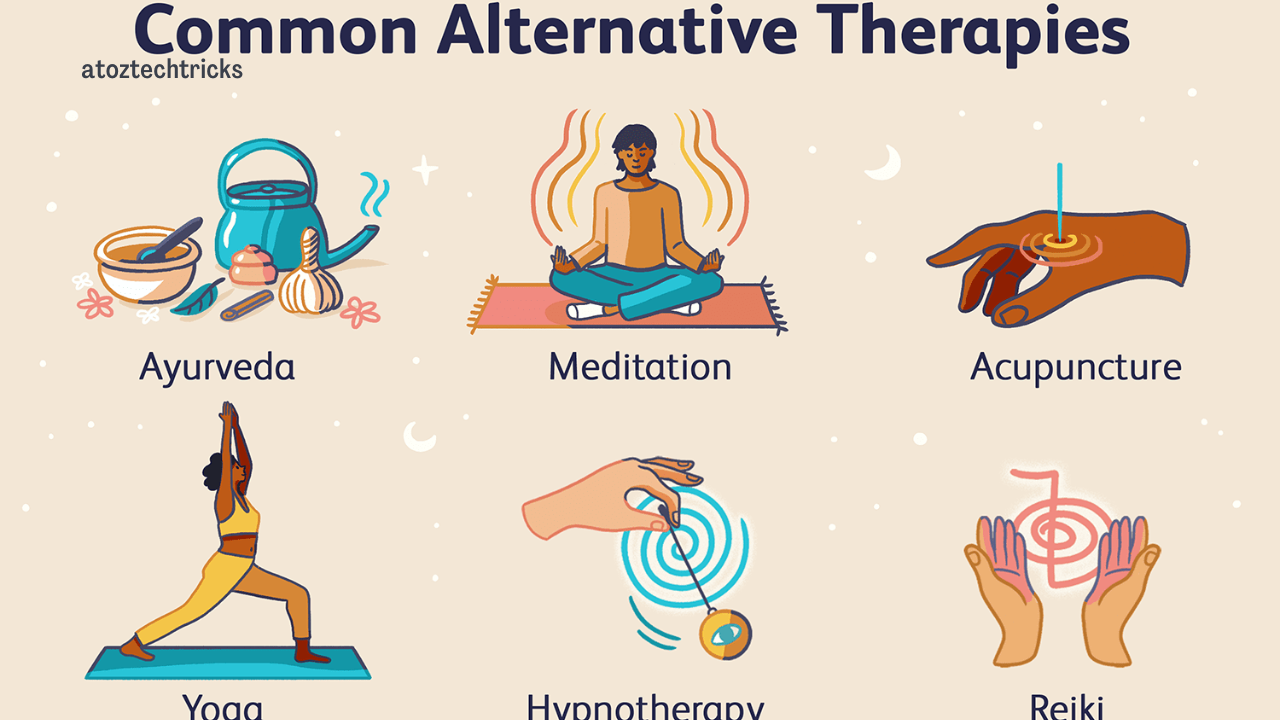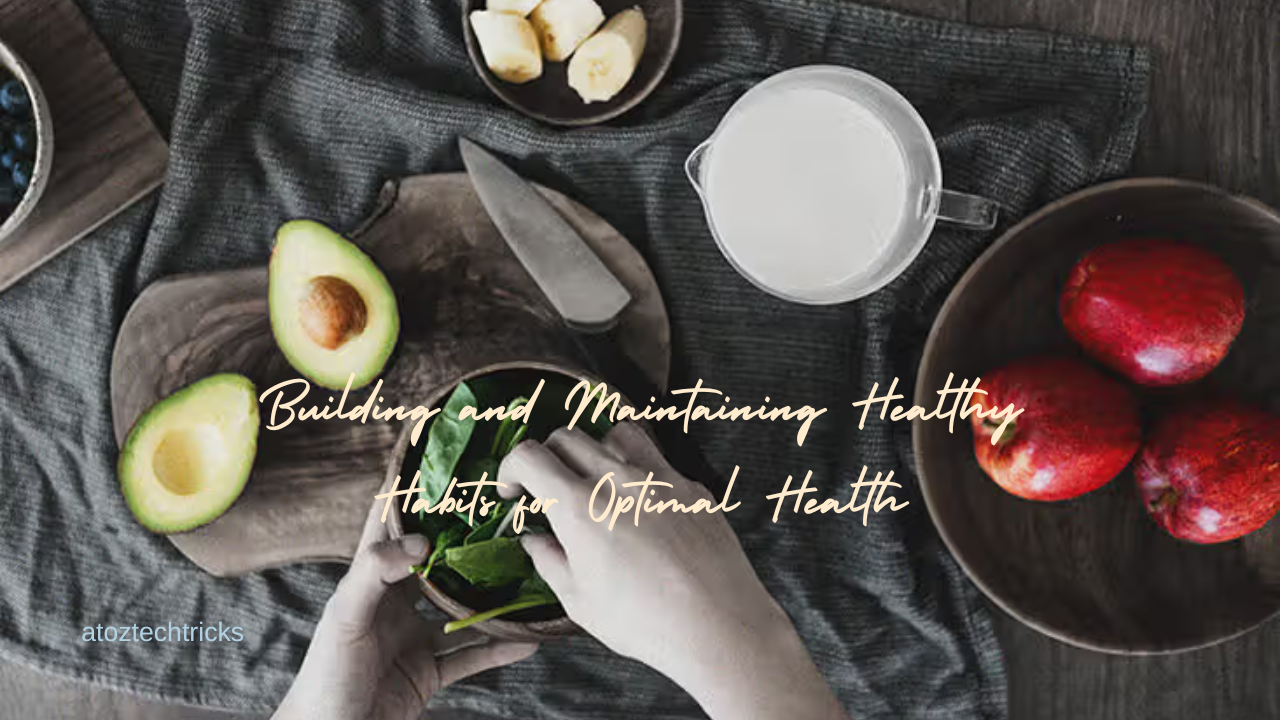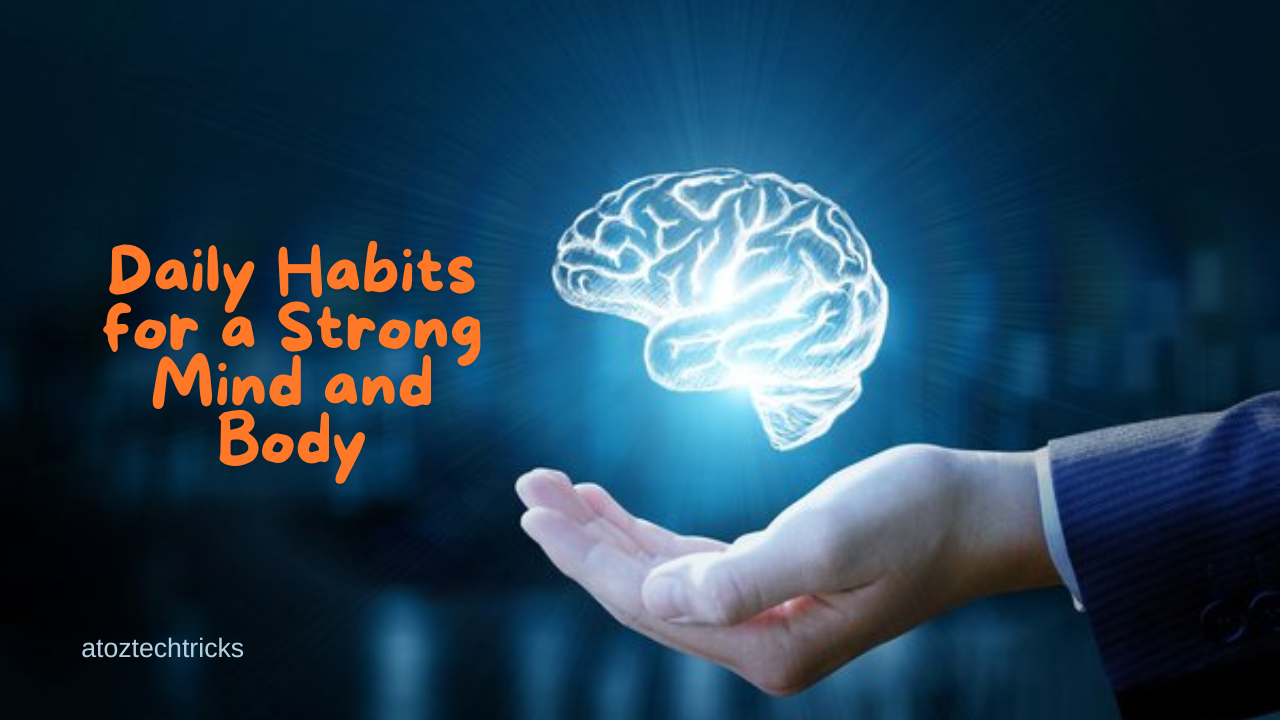Incorporating Alternative Therapies for Holistic Health: A Comprehensive Guide
Holistic health emphasizes the integration of mind, body, and spirit, aiming for overall well-being rather than just the absence of illness. While traditional medicine plays a crucial role in healthcare, alternative therapies offer valuable support and enhancement to holistic health. These therapies can complement conventional treatments and help individuals achieve a more balanced and comprehensive approach to wellness. This guide explores various alternative therapies, their benefits, and how to incorporate them into a holistic health regimen.
1. Understanding Holistic Health
Holistic health is a philosophy that considers the whole person rather than focusing solely on physical symptoms. It acknowledges the interconnectedness of physical, mental, emotional, and spiritual aspects of health. The goal is to achieve balance and harmony, promoting overall well-being and preventing illness.
Key Principles of Holistic Health
- Mind-Body Connection: Recognizing that mental and emotional states can significantly impact physical health.
- Personal Responsibility: Encouraging individuals to take an active role in their health and wellness.
- Preventive Care: Emphasizing lifestyle changes and preventive measures to avoid illness.
- Integration of Therapies: Combining conventional and alternative therapies to address all aspects of health.
2. The Role of Alternative Therapies
Alternative therapies encompass a wide range of practices that are not typically part of mainstream medicine. These therapies focus on enhancing well-being and addressing underlying causes of health issues rather than merely alleviating symptoms. Incorporating alternative therapies can provide additional support for achieving holistic health.
Benefits of Alternative Therapies
- Personalized Care: Tailored to individual needs and preferences.
- Reduced Side Effects: Often associated with fewer side effects compared to some conventional treatments.
- Improved Quality of Life: Can enhance overall well-being and quality of life.
- Holistic Approach: Addresses the whole person rather than just the symptoms.

3. Popular Alternative Therapies and Their Benefits
3.1 Acupuncture
Acupuncture is a traditional Chinese medicine practice that involves inserting thin needles into specific points on the body. It aims to balance the flow of energy (Qi) and promote healing.
Benefits:
- Pain Relief: Effective for managing chronic pain, including back pain, arthritis, and migraines.
- Stress Reduction: This can help reduce stress and anxiety by promoting relaxation.
- Enhanced Immunity: This may improve immune function and overall health.
How to Incorporate:
- Seek a licensed acupuncturist for personalized treatment plans.
- Consider acupuncture sessions as part of a comprehensive wellness routine.
3.2 Aromatherapy
Aromatherapy utilizes essential oils derived from plants to promote physical and emotional well-being. Essential oils can be inhaled, applied topically, or used in diffusers.
Benefits:
- Stress Relief: Essential oils like lavender and chamomile can help reduce stress and anxiety.
- Improved Sleep: Oils such as sandalwood and cedarwood may improve sleep quality.
- Mood Enhancement: Citrus oils like lemon and orange can boost mood and energy levels.
How to Incorporate:
- Use essential oils in diffusers or as part of a massage routine.
- Consult with a certified aromatherapist for guidance on safe and effective use.
3.3 Chiropractic Care
Chiropractic care focuses on the diagnosis and treatment of musculoskeletal disorders, particularly those related to the spine. Chiropractors use manual adjustments to improve alignment and function.
Benefits:
- Pain Relief: Effective for back pain, neck pain, and headaches.
- Improved Mobility: Enhances range of motion and flexibility.
- Posture Correction: Helps correct poor posture and related issues.
How to Incorporate:
- Visit a licensed chiropractor for an initial assessment and treatment plan.
- Include chiropractic care as part of a broader approach to physical wellness.
3.4 Herbal Medicine
Herbal medicine involves the use of plant-based remedies to treat various health conditions. Herbs can be consumed as teas, capsules, or extracts.
Benefits:
- Support for Chronic Conditions: Herbs like turmeric and ginger can support inflammation and joint health.
- Digestive Health: Herbs such as peppermint and fennel can aid digestion.
- Immune Support: Echinacea and elderberry can boost immune function.
How to Incorporate:
- Consult with a qualified herbalist or naturopathic doctor for personalized recommendations.
- Choose high-quality, reputable herbal supplements.
3.5 Yoga and Meditation
Yoga and meditation are practices that integrate physical postures, breathing exercises, and mindfulness to promote mental and physical health.
Benefits:
- Stress Reduction: Helps manage stress and anxiety through relaxation techniques.
- Improved Flexibility: Enhances physical flexibility and strength.
- Mental Clarity: Promotes mental clarity and emotional balance.
How to Incorporate:
- Join a local yoga class or follow online classes to get started.
- Practice meditation daily to improve mental well-being.
3.6 Homeopathy
Homeopathy is based on the principle of “like cures like,” using highly diluted substances to stimulate the body’s healing processes.
Benefits:
- Gentle Treatment: Often considered a gentle and non-invasive approach.
- Personalized Remedies: Remedies are tailored to individual symptoms and conditions.
- Chronic Condition Management: This can be used to manage chronic health issues.
How to Incorporate:
- Consult with a certified homoeopath for individualized treatment.
- Use homoeopathic remedies as directed by a professional.
4. Integrating Alternative Therapies into Your Holistic Health Plan
Incorporating alternative therapies into a holistic health plan involves several steps to ensure they complement and enhance overall well-being.
4.1 Assess Your Needs and Goals
Identify your health goals and specific needs. Consider what aspects of your health you wish to address and how alternative therapies can support these goals.
4.2 Consult with Healthcare Providers
Before starting any alternative therapy, consult with your primary healthcare provider. Ensure that the therapies you choose are safe and compatible with any existing treatments or medications.
4.3 Research and Choose Qualified Practitioners
Select qualified practitioners for each alternative therapy. Look for credentials, certifications, and positive reviews to ensure you receive high-quality care.
4.4 Create a Balanced Routine
Integrate alternative therapies into a balanced health routine. Combine them with conventional medical care, healthy eating, regular exercise, and adequate sleep for a comprehensive approach to wellness.
4.5 Monitor and Adjust
Monitor your progress and adjust your therapies as needed. Keep track of how each therapy impacts your overall well-being and make changes based on your experiences and feedback from healthcare providers.
4.6 Embrace Lifestyle Changes
Adopt lifestyle changes that support holistic health. This may include stress management techniques, a balanced diet, and regular physical activity in addition to alternative therapies.

5. Case Studies and Success Stories
5.1 Case Study: Chronic Pain Management
A patient with chronic back pain incorporated acupuncture and chiropractic care into their treatment plan. The combination of therapies led to significant pain relief, improved mobility, and enhanced overall quality of life.
5.2 Success Story: Stress Reduction and Mental Clarity
An individual experiencing high levels of stress and anxiety found relief through yoga and meditation. By practising regularly, they achieved better stress management, improved sleep quality, and greater mental clarity.
5.3 Case Study: Immune System Support
A person with a weakened immune system began using herbal supplements such as echinacea and elderberry. Over time, they experienced fewer illnesses and improved overall immune function.
6. Potential Challenges and Considerations
6.1 Lack of Regulation
Alternative therapies may not be as regulated as conventional medicine, which can affect quality and safety. Choose reputable practitioners and products to mitigate this risk.
6.2 Integration with Conventional Treatments
Ensure that alternative therapies complement rather than conflict with conventional treatments. Open communication with healthcare providers is essential to avoid potential interactions or contraindications.
6.3 Individual Variability
The effectiveness of alternative therapies can vary from person to person. What works for one individual may not work for another, so be prepared to experiment and adjust your approach.
6.4 Cost and Accessibility
Some alternative therapies may not be covered by insurance and can be costly. Consider the financial implications and explore options for affordable or sliding-scale services.
Incorporating alternative therapies into a holistic health plan offers a valuable way to enhance overall well-being and address a variety of health concerns. By integrating therapies such as acupuncture, aromatherapy, chiropractic care, herbal medicine, yoga, and homoeopathy, individuals can achieve a more balanced and comprehensive approach to health. It’s important to consult with healthcare providers, choose qualified practitioners, and create a balanced routine to ensure the best outcomes. Embracing alternative therapies alongside conventional treatments can help you achieve optimal health and well-being, promoting a harmonious and fulfilling life.




Post Comment